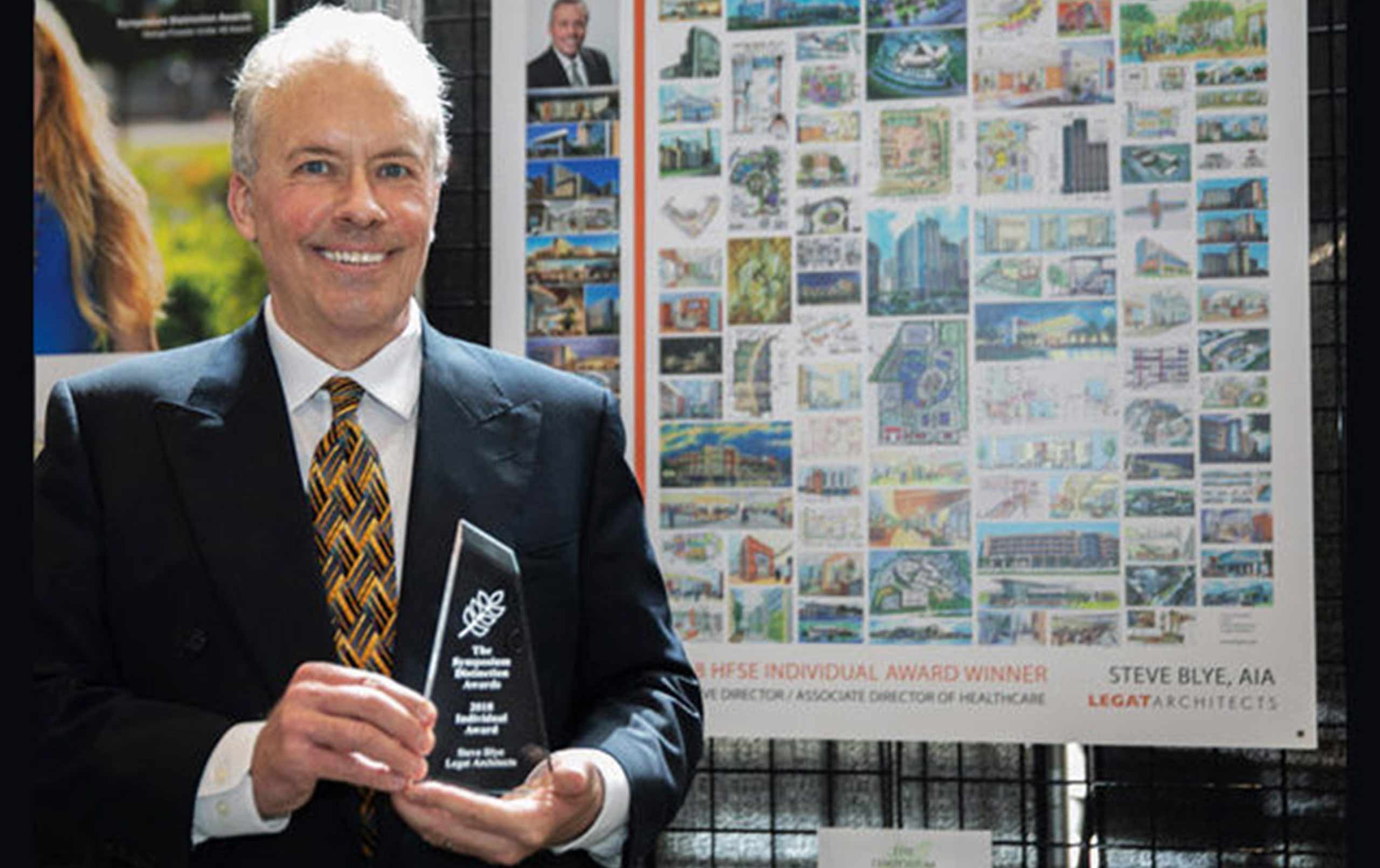
Legat Architects’ Steve Blye recognized at national conference for “profound contribution to healthcare industry”
[Austin, Texas] – Steve Blye’s hands are often speckled with color . . . evidence of his devotion to shaping pioneering healthcare environments. The colors come from the sketches, renderings, and paintings that he creates, often late into the night, to give healthcare providers a clear vision of their facilities.
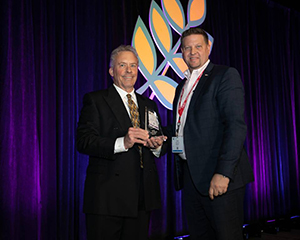
Steve, associate director of healthcare and creative director at Legat Architects, has dedicated nearly 40 years to transforming the healthcare industry. He is a planner, an architect, an interior designer, a teacher/mentor, and a design juror. His freehand creations convey building design, as well as the emotions . . . of a visitor arriving at a late-night emergency room, a patient awakening from surgery in an unknown room, or a caregiver working the night shift.
The Healthcare Facilities Conference and Expo, one of the nation’s largest annual gatherings of industry leaders, recognized Blye’s healthcare contributions by presenting him the Individual Award in its Healthcare Symposium Distinction Awards. The program recognizes “projects and individuals who have made a profound contribution to the healthcare design industry.” Blye accepted the award at the Austin Convention Center on October 8, 2018.
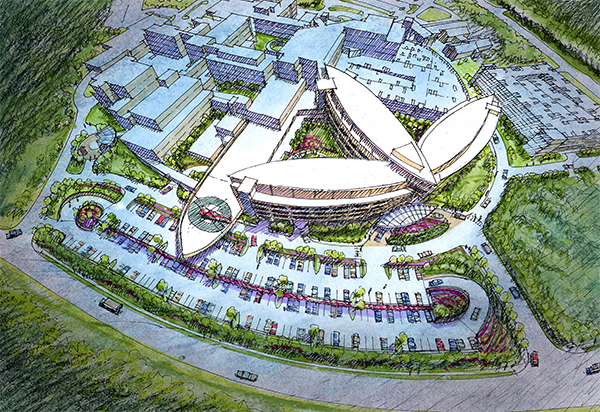
According to the organization, “The Individual Award seeks to distinguish a professional in the fields of healthcare planning, design, construction, and operations who has displayed leadership and vision over a significant period of the recipient’s career. This award looks to recognize an individual whose passion has driven organizations or project teams to enhance the healing environment.”
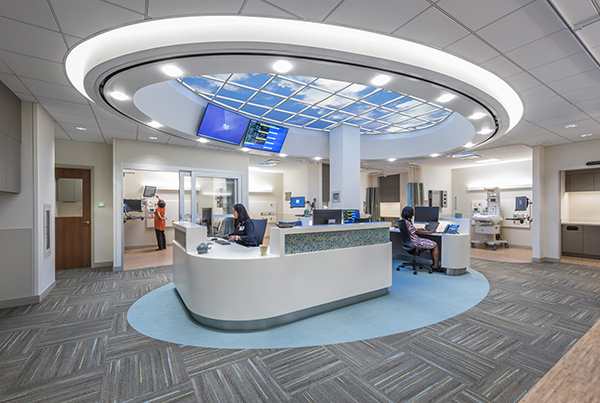
“Good Enough” Isn’t Enough
Blye’s hand-drawn concepts entice clients, but they are not just pretty pictures. Rather, they are fully realized design solutions that support today’s technology, fulfill the clinician’s needs for efficiency, comfort the family caregiver, and maximize patients’ control of their environment.
He has adapted his freehand talents to work with his open approach to problem solving and design. Repeatedly, Blye’s concepts have brought about the client response that so many designers struggle to achieve: “I get it.”
At a kick-off meeting for a minor patient room renovation, many were surprised when Blye took out his notebook: he had four pages of questions.
Casey Frankiewicz, Legat’s director of healthcare, said, “Steve injects a mindset that ‘good enough’ isn’t enough into every project, whether it’s the global content, micro community of the department, brand consistency, detailing how a countertop meets a wall, or designing a façade to respect its surroundings. This passion for quality covers all levels of design: scale, geometry, texture, maintenance, constructability, color, and pattern to the closing details of artwork, accessories, and furniture.”
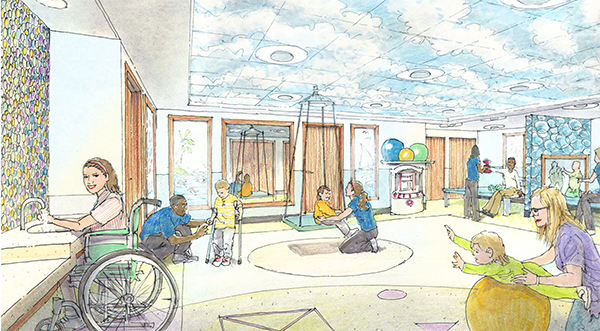
Recently, Blye helped a client determine that the themes of nature and excitement should inspire the design of an outpatient pediatric rehabilitation clinic. His concept, featuring an abstract tree as a centerpiece, infused the space with vibrant colors and intriguing shapes. He even went so far as to introduce a scavenger hunt-like game into the concept to further the interest of this specific population.
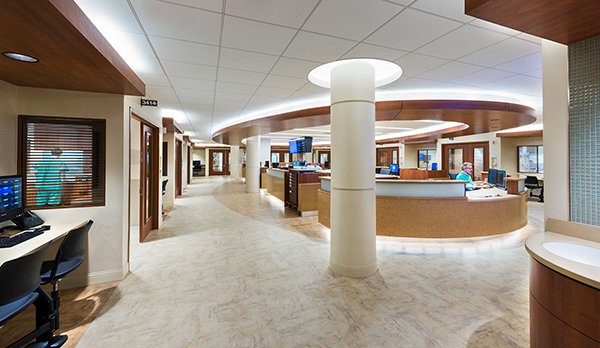
The Human Side of Healthcare
Besides warmth, Blye’s drawings contain something often overlooked in computer-generated images: people. Not just people standing around, but people interacting, exploring, engaging . . . people experiencing their environment.
Blye is adamant about designing spaces that distract from the normal anxiety-inducing healthcare process, not just for the patient, but also for the family members and providers. By making the day more enjoyable for clinicians, he often says, the environment makes the healthcare experience more enjoyable for patients.
For instance, Blye’s recent design of a linear accelerator vault uses faux skylights, wood tone materials, a natural stone-faced wall, rubber flooring, and adjustable lighting to make radiation treatments less intimidating.
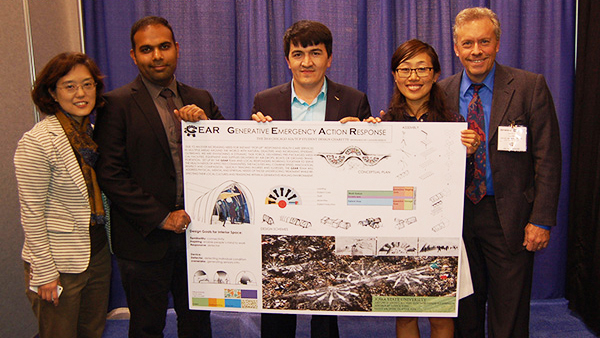
Industry Advocate
From students to seasoned professionals, many within the architectural field have benefited under Steve’s tutelage. He has mentored college students interested in healthcare design and served as a juror for national healthcare design competitions.
Legat’s design principal Ted Haug said, “Since joining Legat six years ago, Steve has not only elevated our design output, but also instilled in our staff a willingness to embrace challenges.”
Three times, Steve served as a mentor for the American Institute of Architects’ (AIA) Healthcare Student Design Charrette program. He welcomed teams of students, attended all their meetings, spent a weekend guiding them on their projects, accompanied them to their final presentation, and then took them on a tour of downtown Chicago . . . all on his own time.
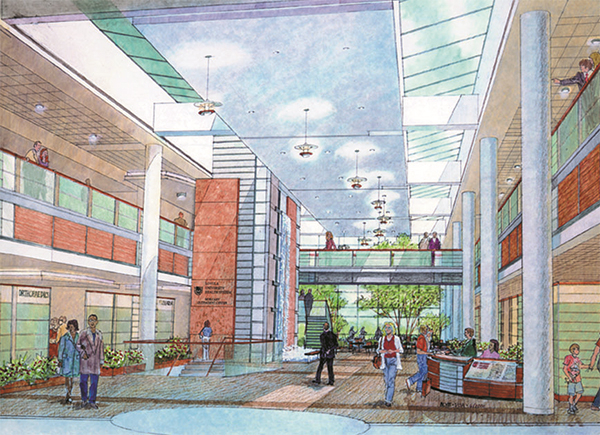
The Art of the View
Casey Frankiewicz’s first experience with Steve Blye’s work was as a classmate in the University of Illinois’ undergraduate architecture program. One of the first projects challenged students to carve space from a seven-inch cube. Most students communicated their concepts in a conventional way: by showing 2-D drawings of the cube.
“There was one that was much different,” said Frankiewicz. “Steve Blye’s concept showed a stage from the vantage of a theatergoer. A cube, which had legs, was illustrated moving across the stage as if in a talent show to display different views. This is early evidence of Steve’s drive to design solutions that are relatable to everyone.”
The earliest evidence of Blye’s passion for design stems back to age six, when he proclaimed to the world his aspirations on the Peoria, Illinois-based children’s TV show Captain Jinks and Salty Sam. While other kids said they wanted to be astronauts, football players, and ballerinas, Steve surprised the audience when he said, “I want to be an architect.” A fitting introduction for a lifelong passion for design.
See more of Steve Blye’s projects and drawings.
Contact us to learn more about healthcare facility design, or comment below to share your thoughts on this post.


